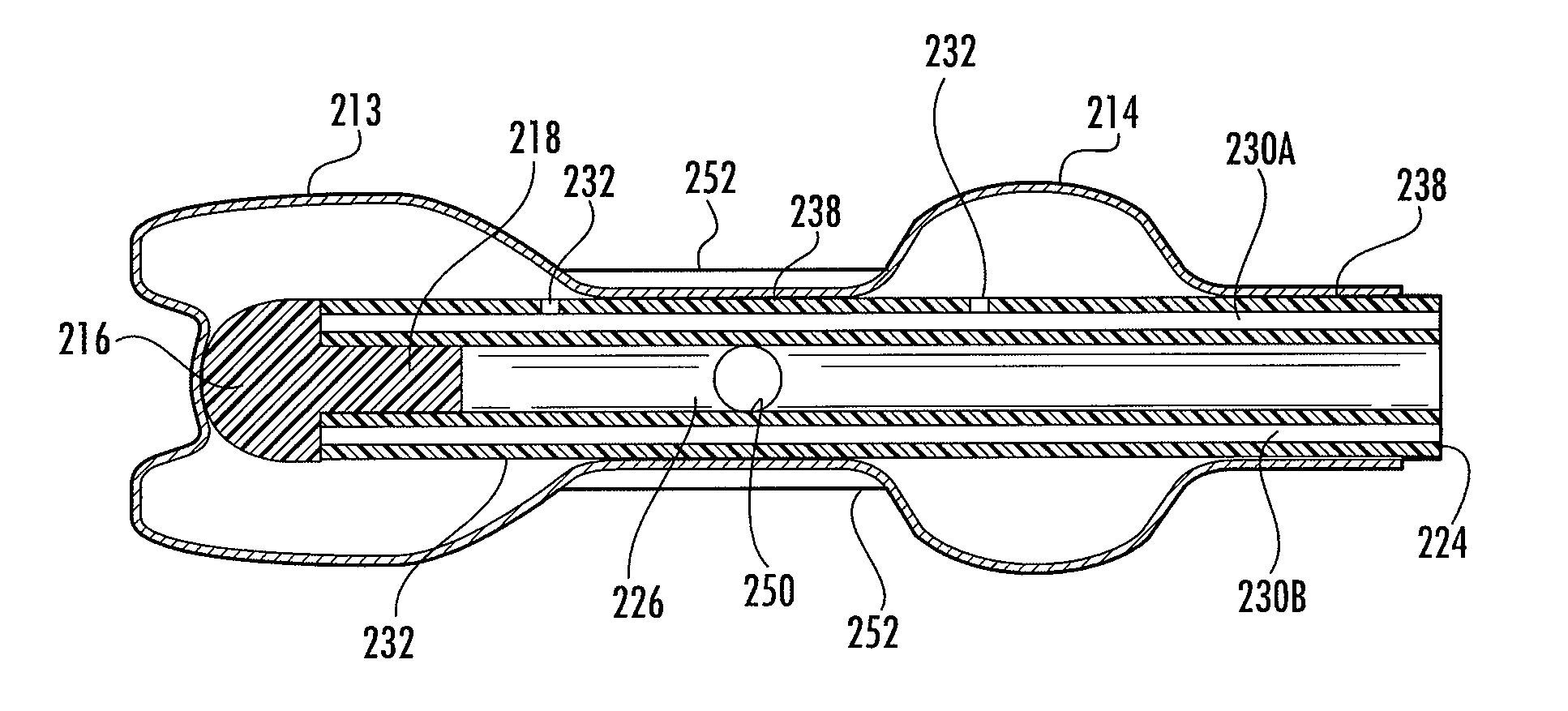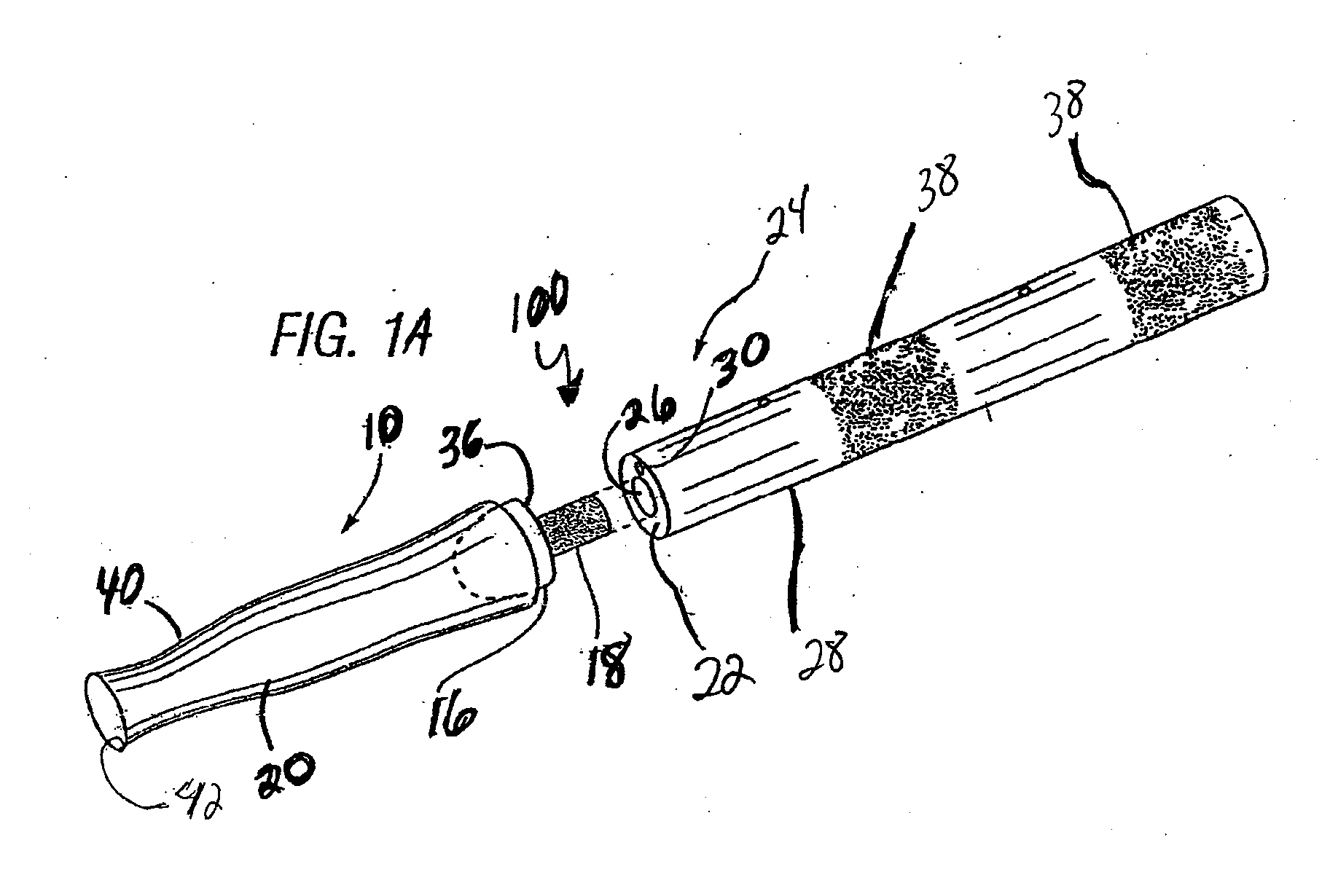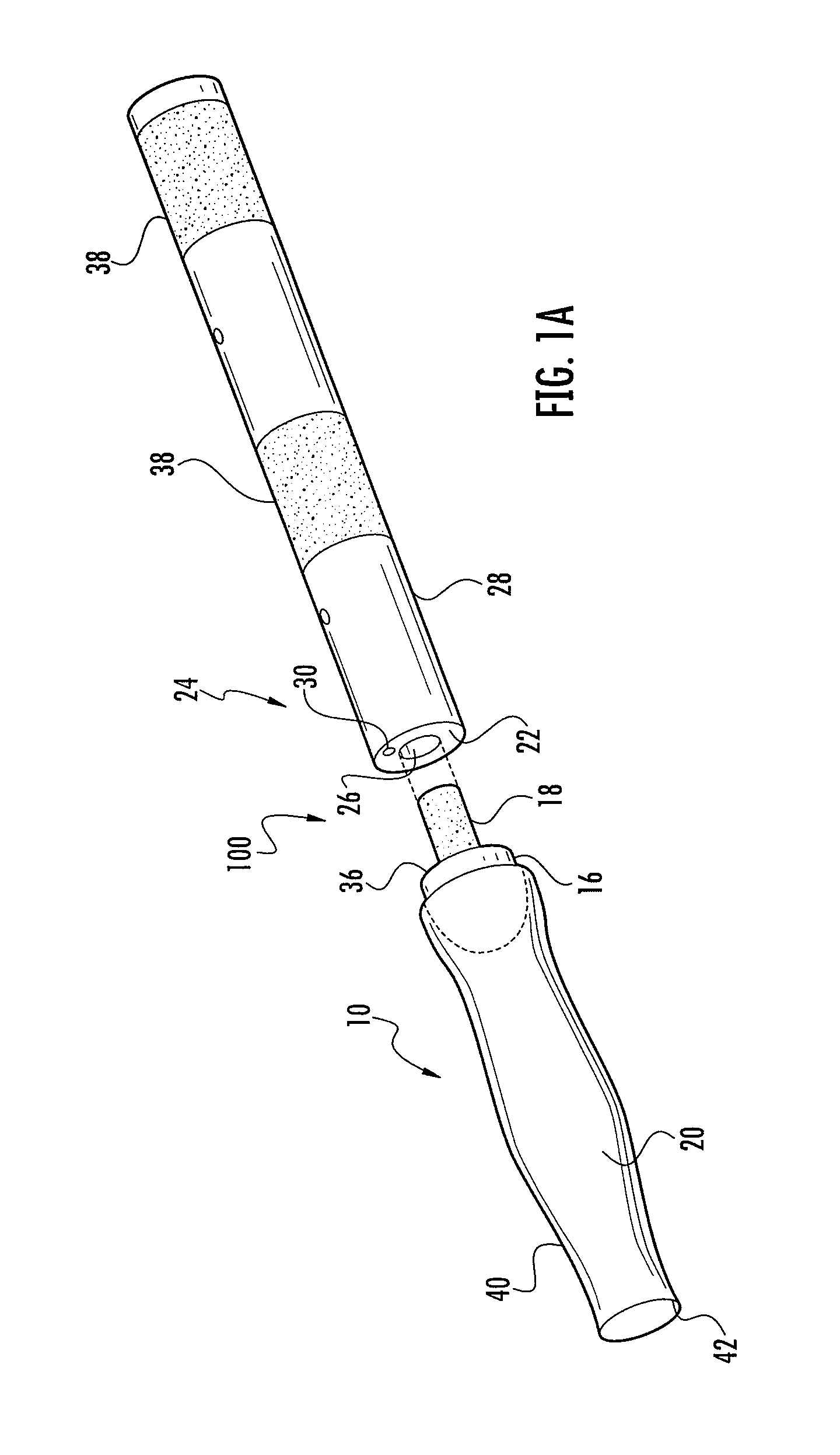Balloon Encapsulated Catheter Tip
a catheter tip and balloon technology, applied in balloon catheters, catheters, stents, etc., can solve the problems of top over and blockage of drainage apertures, damage to any tissue structure, tip of catheter exposed, etc., to achieve easy rolling, enhance lubricity, and prevent sticking together
- Summary
- Abstract
- Description
- Claims
- Application Information
AI Technical Summary
Benefits of technology
Problems solved by technology
Method used
Image
Examples
Embodiment Construction
[0051]While this invention is being described in its preferred embodiment as having a definitive catheter, it should be understood that the catheter is a commercially available item and that the invention is applied thereto and, as will be appreciated by one skilled in this technology, that the invention has utility for other types of catheters, some of which are disclosed in U.S. Pat. No. 4,351,342, supra.
[0052]Referring to FIGS. 1-6, the instant invention provides a catheter assembly 100 or catheter tip 10 that includes a first balloon 13 constructed and arranged to encapsulate the distal end 12 of the catheter to prevent the drawbacks of the prior art, and a second balloon 14 to position the catheter within a body duct, cavity, or vessel (not shown). The catheter tip 10 includes a cap 16 preferably having a stem portion 18 and a sleeve portion 20 secured to or integrally formed with the cap. The tip 10 and sleeve 20 are preferably constructed of resiliently flexible biocompatible...
PUM
 Login to View More
Login to View More Abstract
Description
Claims
Application Information
 Login to View More
Login to View More - R&D
- Intellectual Property
- Life Sciences
- Materials
- Tech Scout
- Unparalleled Data Quality
- Higher Quality Content
- 60% Fewer Hallucinations
Browse by: Latest US Patents, China's latest patents, Technical Efficacy Thesaurus, Application Domain, Technology Topic, Popular Technical Reports.
© 2025 PatSnap. All rights reserved.Legal|Privacy policy|Modern Slavery Act Transparency Statement|Sitemap|About US| Contact US: help@patsnap.com



